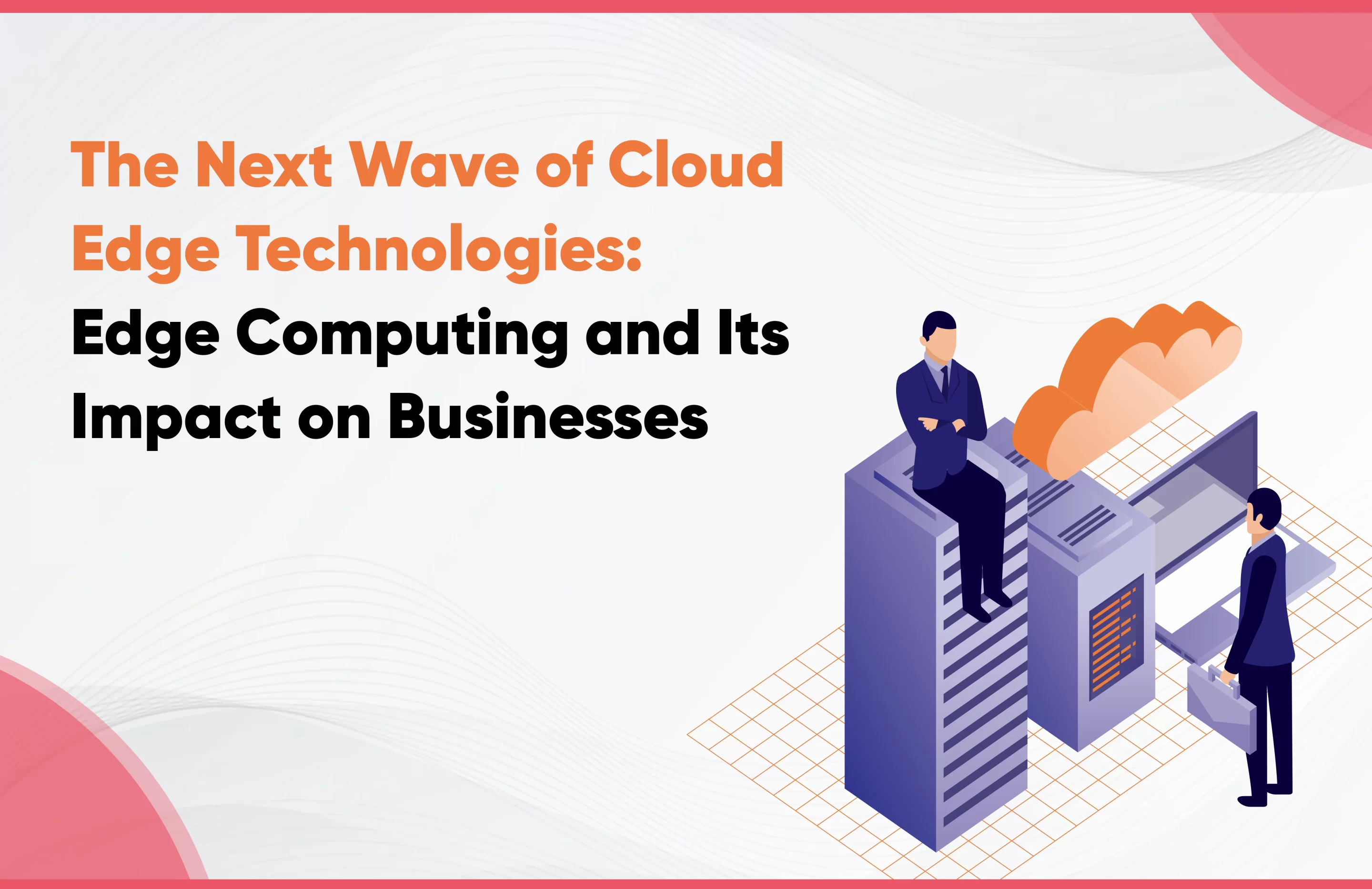In recent years, cloud computing has completely changed how businesses work, offering them more flexibility, scalability, and cost savings. But as technology keeps advancing, businesses want even more. That’s where cloud edge technologies come in. It’s like a big upgrade to cloud computing because it brings data processing closer to where it’s generated.
Did you know that experts predict the edge computing market will explode? According to Accenture, 83% of businesses believe in the power of edge computing to stay competitive. This shows how much businesses see the value in edge computing. Moreover, edge computing will grow to a $4.1 trillion economy by 2030.
So, what exactly is edge computing, and why should businesses care? It’s all about making things faster, more efficient, and smarter. It fixes some of the problems with traditional cloud systems and opens up new opportunities for all kinds of businesses.
In this blog post, we’ll explore what cloud edge technologies are, their implications for businesses, the impact of edge computing, and how it’s reshaping the future of cloud computing.
Understanding Cloud Edge Technologies: Bringing Processing Closer to Data
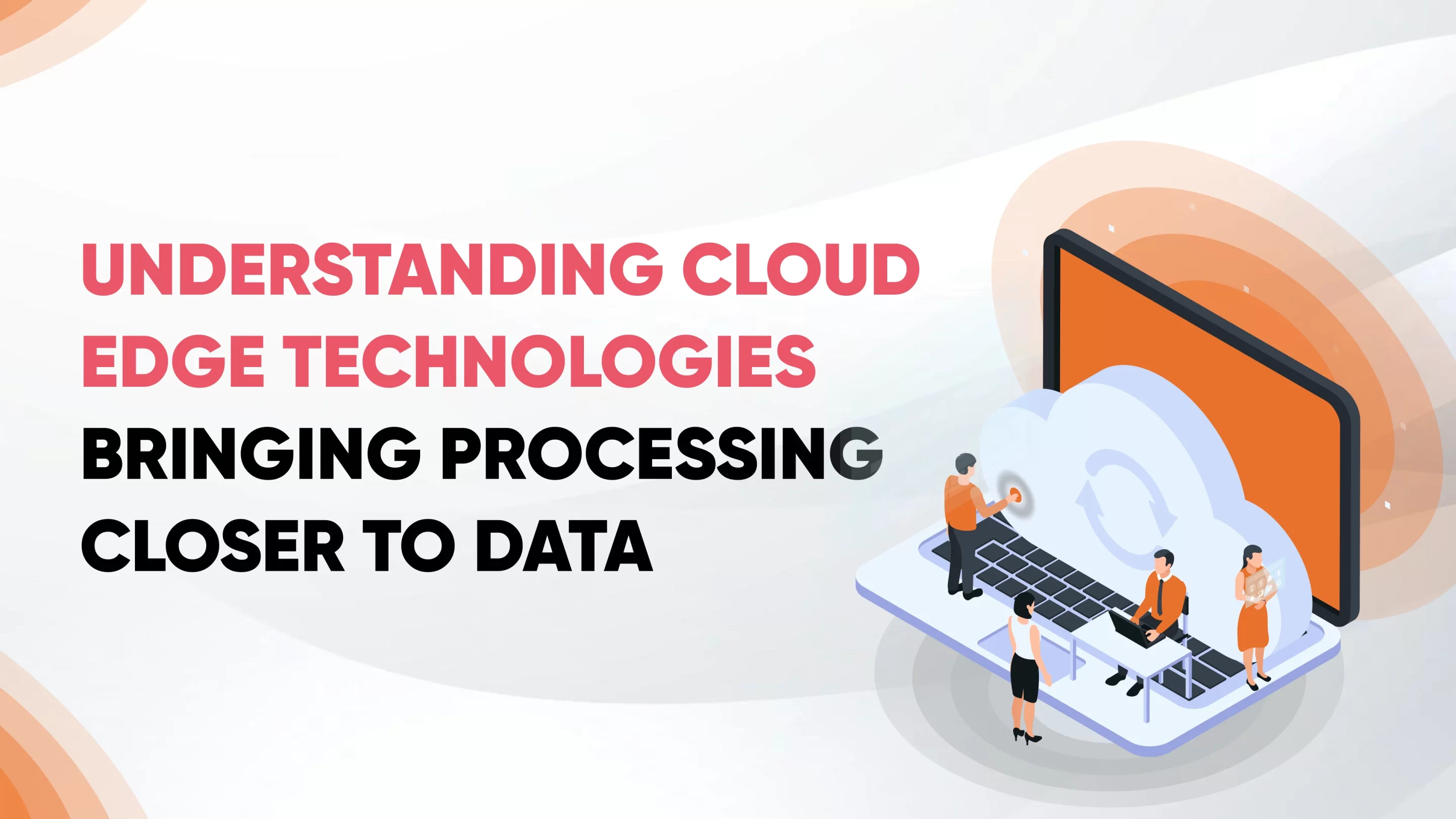
Cloud edge technologies refer to a distributed computing model that combines elements of both cloud computing and edge computing. In simple terms, Cloud edge technologies are like supercharged versions of cloud computing. Instead of sending all the data to far-away data centers, they bring the processing power closer to where the data is created.
It’s like having mini-computers right where the action is happening – near devices and sensors. This setup makes things faster and more efficient because data doesn’t have to travel as far. Imagine if you could make decisions instantly, without waiting for information to travel back and forth across long distances. That’s the magic of new edge technologies.
Businesses love cloud edge technologies because they help them use data from smart devices and sensors more effectively. Processing data right where it’s generated enables companies to make quick decisions, improve operations, and offer better services to their customers.
In a nutshell, cloud edge technologies are changing the game by making data processing smarter, faster, and more efficient, all by bringing the power of the cloud closer to home.
Edge Computing vs Cloud Computing: Understanding the Differences
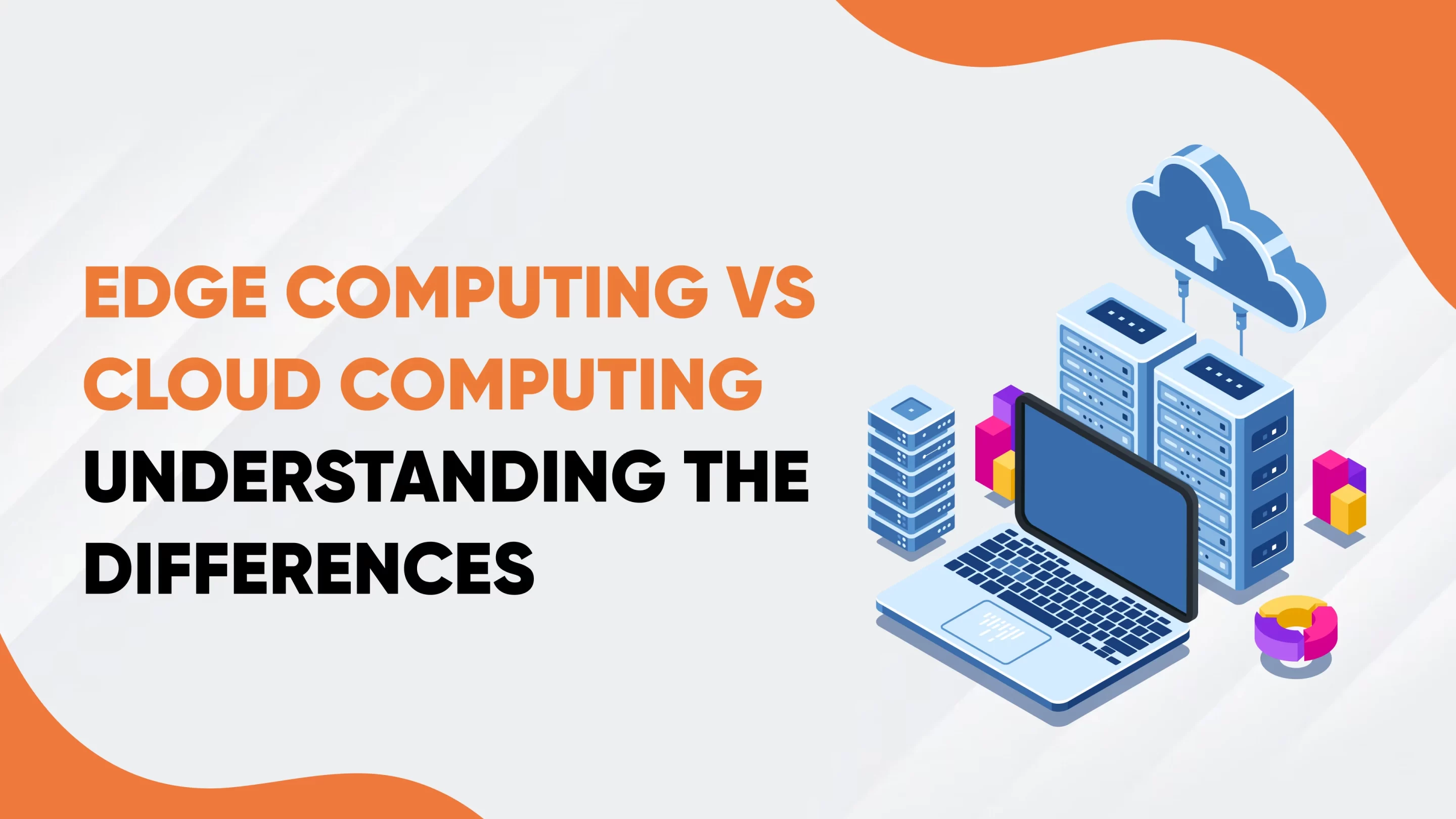
Cloud computing and Edge computing are both computing paradigms, but they differ in how and where they process data:
Cloud Computing:
- Third-party providers manage data processing and storage in centralized remote data centers in cloud computing.
- Users access computing resources, such as servers, storage, and software applications, over the Internet on a pay-as-you-go basis.
- Cloud computing offers scalability, flexibility, and cost-effectiveness, making it ideal for applications with varying workloads and resource demands.
- Cloud computing and AI work together to make computing resources more powerful and flexible, adapting to different needs and tasks.
- Examples of cloud computing services include Amazon Web Services (AWS), Microsoft Azure, and Google Cloud Platform (GCP).
Edge Computing:
- Edge computing brings computation and storage closer to where it’s needed by decentralizing data processing and storage. This includes devices and sensors.
- Instead of sending all data to centralized data centers, edge computing processes data locally, reducing latency and improving response times.
- Edge computing suits applications requiring real-time processing, such as IoT devices, autonomous vehicles, and augmented reality.
- Edge computing examples include edge servers, gateways, and content delivery networks (CDNs).
- Some of the edge computing companies are Amazon, Microsoft, Dell, Nvidia, and more.
Benefits of Cloud Edge Technologies for Businesses: Enhanced Efficiency and Performance
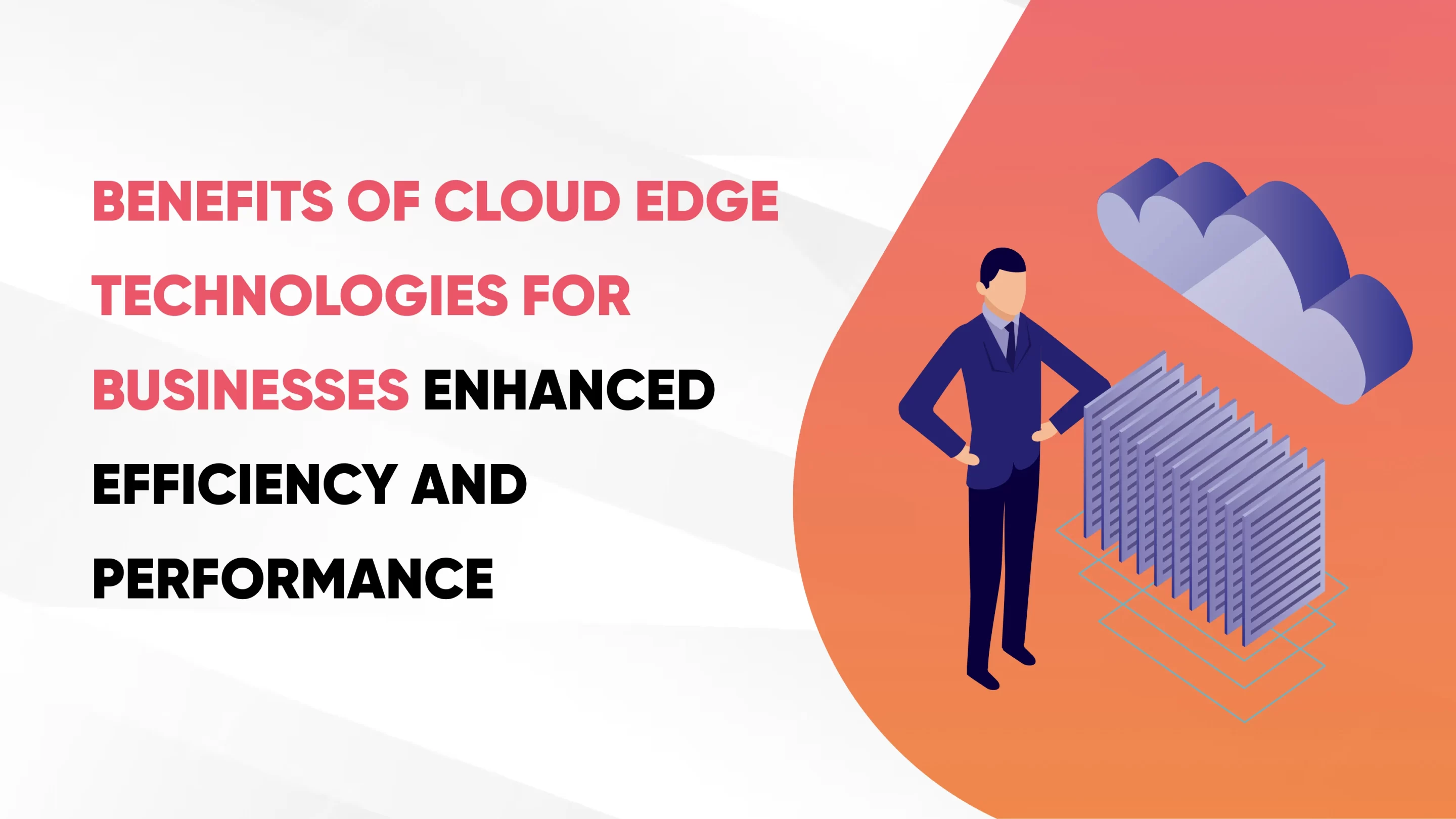
Cloud edge technologies are like having super-fast computers right where the action is happening, making everything quicker and more responsive. Here are some of the benefits of cloud edge technologies:
-
Low Latency
Handling data closer to where it’s created, edge computing makes things faster. Which means less waiting time for data to travel between devices and central servers. This speed is super important for things that need to happen right away. For example, self-driving cars, factory machines, and virtual reality experiences.
-
Bandwidth Optimization
Cloud edge technologies process data closer to where it’s generated, minimizing the need for data to travel long distances. This reduces delays and ensures faster response times for critical applications. Businesses benefit from improved efficiency and cost savings due to reduced bandwidth consumption.
-
Enhanced Security and Privacy
Cloud edge technologies offer enhanced safety by keeping sensitive data close to its source. Thus, lowering the chance of breaches and meeting privacy regulations. Additionally, minimizing data travel distances improves network efficiency and speeds up processing times.
-
Scalability and Flexibility
Edge computing enables businesses to scale their computing resources dynamically based on demand. By deploying edge nodes closer to users or devices, organizations can accommodate fluctuations in workload. Moreover, that too without overprovisioning centralized infrastructure.
Impact of Cloud Edge Technologies on Businesses: Driving Innovation and Efficiency
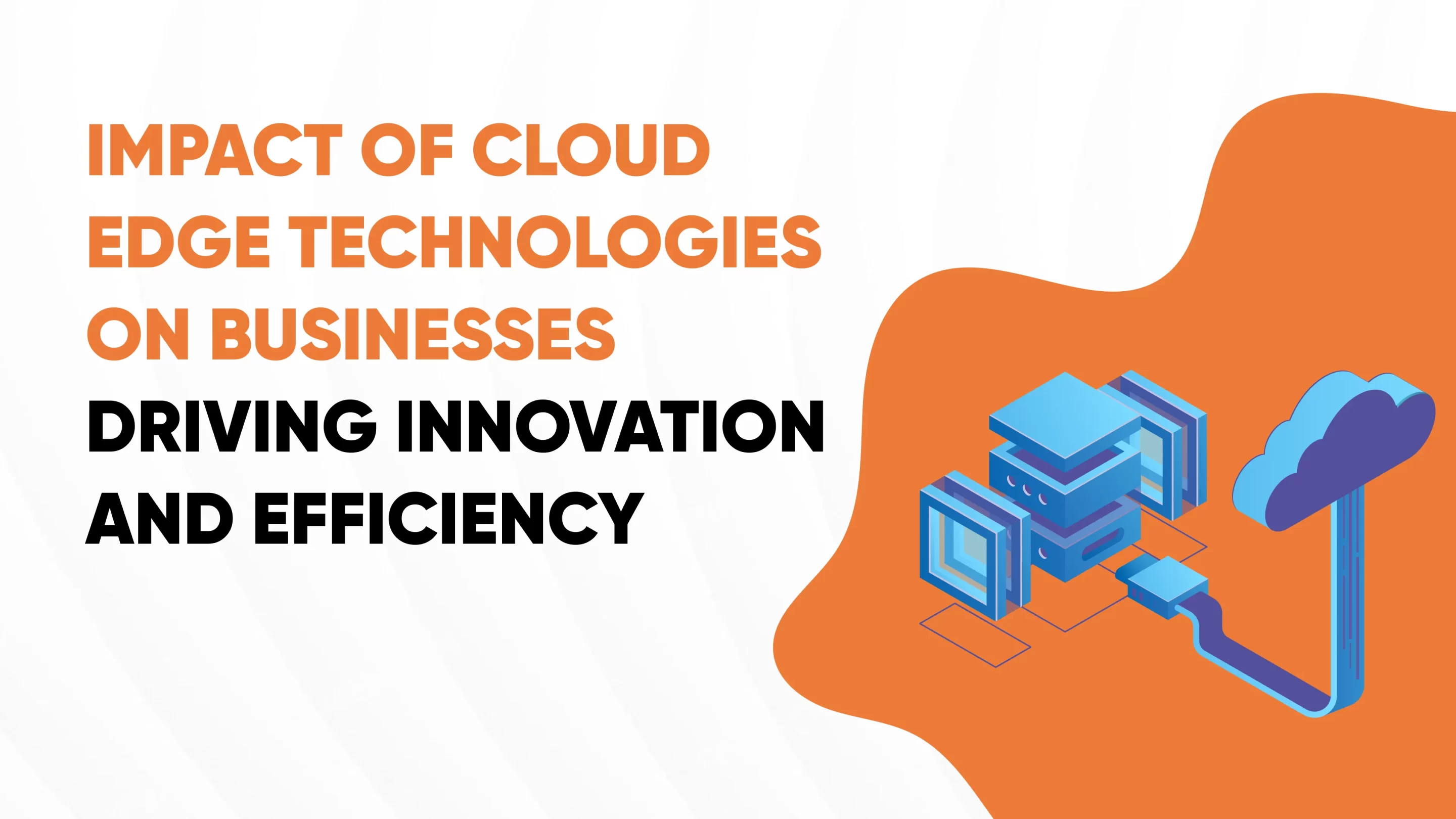
Cloud edge technologies revolutionize how businesses operate by enabling real-time data processing at the network’s edge. Let’s dive into the impact of edge computing on businesses.
-
Industry Disruption
Edge computing’s disruptive potential extends across various industries, including manufacturing, healthcare, retail, and transportation. By enabling real-time analytics and decision-making at the edge, businesses can optimize operations. Moreover, improves customer experiences, and gains a competitive edge in the market.
For instance, in telemedicine applications, edge computing enables real-time analysis of patient data collected from wearable devices or sensors. This allows healthcare providers to monitor patient health remotely, make timely interventions, and deliver personalized care,
-
Innovation Acceleration
Businesses utilize cloud edge technologies to run advanced applications closer to where they’re needed. Businesses can leverage edge computing to create innovative solutions that meet evolving customer needs. These range from autonomous drones and smart cities to personalized retail experiences.
For example, Tesla, a self-driving car manufacturer giant, uses cloud edge technologies. Tesla employs edge computing for its autonomous driving capabilities. Thus, handling real-time sensor data processing within its vehicles.
-
Edge-to-Cloud Integration
Rather than replacing traditional cloud computing, edge computing complements it. It extends cloud capabilities to the network’s edge. This integration allows businesses to leverage the scalability and storage capabilities of the cloud. They can harness the speed and agility of edge computing for time-sensitive tasks.
For instance, a manufacturing plant may utilize cloud computing for storing and analyzing historical data to optimize overall operations. However, for real-time quality control on the production line, edge computing is essential.
-
Operational Efficiency
Edge services process data locally, reducing the need for long-distance data transmission. This streamlines operations and cuts business costs. It enables predictive maintenance, asset tracking, and energy management. Additionally, it optimizes supply chain operations and drives efficiency across various business functions.
For example, cloud edge technologies help transportation companies track vehicle fleets in real time. They analyze data like fuel consumption and route efficiency locally. This allows for proactive maintenance and optimized delivery routes.
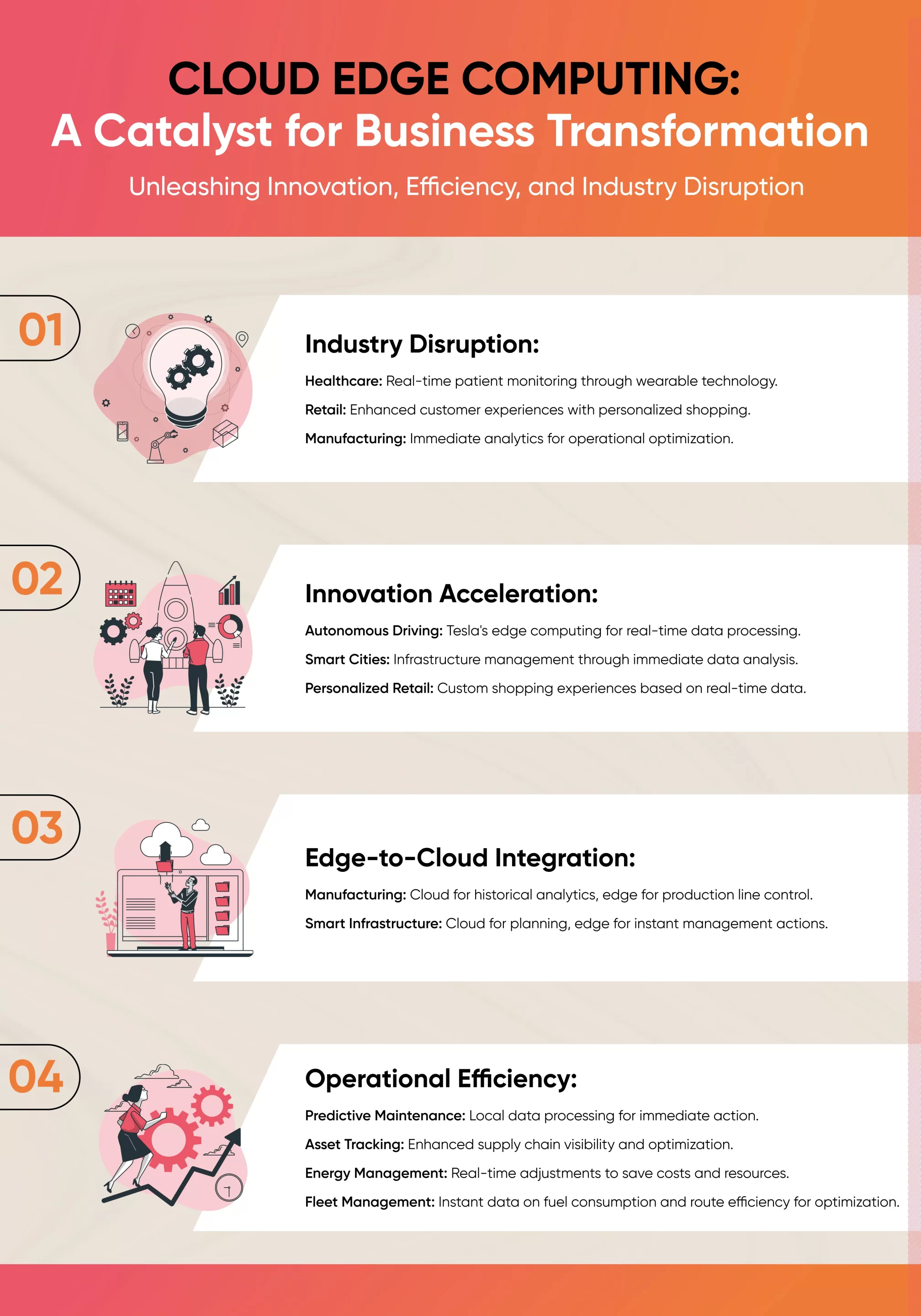
The Future of Cloud Edge Technologies: Advancements and Innovations Ahead
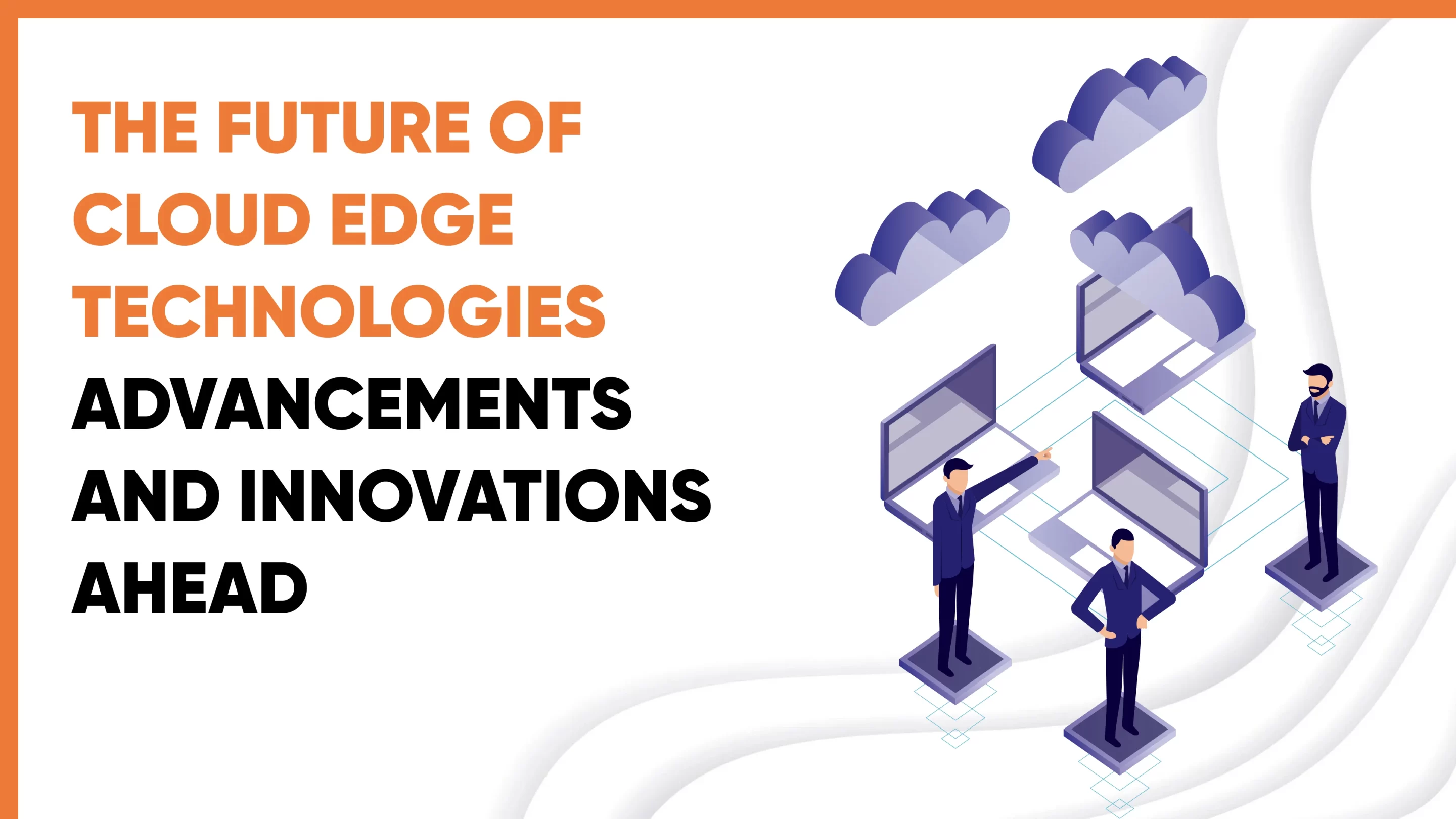
Cloud edge technologies will drive significant advancements in the digital landscape. These technologies are evolving rapidly, pushing the development of cutting-edge digital services.
Additionally, we can expect to witness further integration of edge computing with cloud platforms and Generative AI. Thus, leading to enhanced capabilities for real-time data processing and analytics. Industries such as IoT, healthcare, and autonomous vehicles stand to benefit immensely from these advancements.
Moreover, with the increasing power of edge devices, various sectors are expected to adopt edge computing more widely. Businesses will increasingly turn to cloud edge technologies to meet the growing demands for speed, efficiency, and responsiveness.
Conclusion
Edge computing is the next wave of cloud computing, offering businesses unprecedented opportunities. It brings processing power closer to the source, revolutionizing business operations. Moreover, cloud edge technologies enable real-time insights, enhanced security, and unparalleled scalability.
Businesses must adapt their strategies and infrastructure to embrace edge computing fully. Those who do will thrive in the evolving landscape of cloud computing. However, leveraging cloud edge technologies is indeed a tough task. Alternatively, you can hire professionals for your cloud edge needs.
FAQ
-
What skills should I look for in an edge computing developer?
When hiring an edge computing developer, look for skills in:
Programming languages: Proficiency in Python, Java, or C++, which are commonly used in edge applications.
Networking: Understanding of network architectures and protocols because edge computing involves extensive networking.
Cloud platforms: Experience with major cloud services like AWS, Azure, or Google Cloud, particularly their edge computing offerings.
IoT integration: Knowledge of integrating and managing IoT devices since many edge computing applications are closely tied to IoT.
Security: Strong grasp of cybersecurity principles to secure edge computing environments.
-
What are edge technologies?
Edge technologies refer to the hardware, software, and networking solutions that facilitate computing at the edge of a network, closer to data sources such as IoT devices, rather than centralized data centers. This includes edge servers, IoT gateways, and the associated software that manages and processes data locally.






